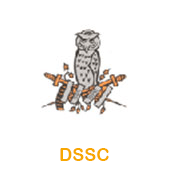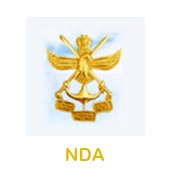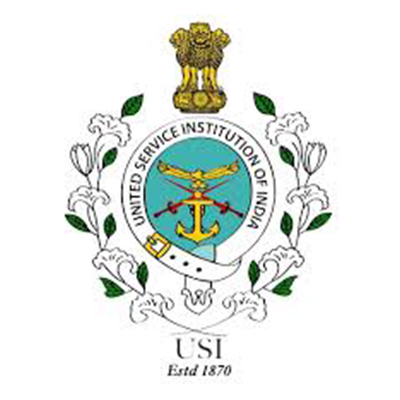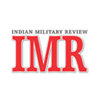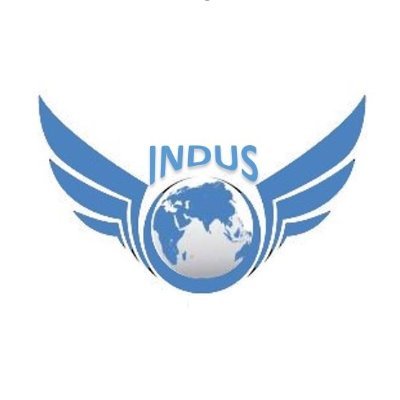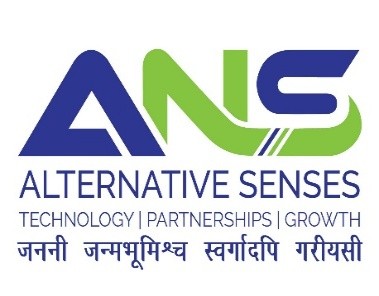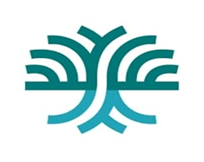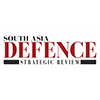Seminar | 21-May-2018
Posted on | 12-Jun-2018
REPORT ON THE ROUND TABLE DISCUSSION PAL NAVY IN THE IOR HELD AT PURPLE BAY ON 21 MAY 2018
1. Opening Remarks. Director CENJOWS Lt Gen Vinod Bhatia, PVSM, AVSM, SM (Retd) welcomed the speakers and audience to the Round Table Discussion. In his introduction he stated that China was a new and powerful entrant into the Indian Ocean Region and its forays into India’s backyard had important implications for Indian security as well as influence in the region. He said that the two major issues which India has with China are the land boundary dispute and strategic space in IOR. India has a direct interest in IOR and there is a need to take a pragmatic view of what China is doing, what their capabilities are and what we need to do to counter China. With Chinese ship building capabilities on the rise, they are likely to have a 550 ship Navy in future which may restrict our operating space in IOR and IN needs to take effective and timely countermeasures.
2. Growth of PLA Navy. Rear Adm Monty Khanna, NM, VSM, Chief Instructor (Navy), DSSC gave a historical perspective of the origin and growth of Chinese Navy. The modern Chinese Navy originated from near zero resources in 1949 with initial assistance from USSR. Their first venture beyond the first island chain was as late as 1976 but they have progressed by leaps and bounds since then and now overshadow India as a maritime power. They have continually evolved their war fighting strategy over a period of time. They now believe that Artificial Intelligence (AI) will induce battle field singularity wherein the OODA loop becomes so short that decisions will be taken almost instantaneously. The maritime component of their ‘Warfighting Component of Active defence’ are offshore defence and spatial expansion. The efforts made by China to acquire Taiwan and other disputed islands in the South China Sea is due to the requirement felt by the Chinese Navy to project military power deep into the Pacific Ocean. The Chinese strategy against the US is threefold i.e. asymmetry near its landmass, symmetry at greater ranges through economic and industrial growth and hedging against denial of SLOCs. The rate of ship building in China is the highest in the world and they are rapidly adding corvettes, frigates, destroyers, submarines, aircraft carriers and other ships to their fleet at an unprecedented rate. They are also rapidly developing their basing infrastructure at Woody Island, Ferry X Reef, Subi Reef, etc. There is huge infrastructure in place for their main anti-ship missile (assassins’ mace) and amphibious assets. On the international front, China is now the third largest exporter of defence equipment and it is rapidly acquiring bases such as Djibouti. It indulges in doghouse diplomacy, tourism diplomacy and also cultural diplomacy through their Confucius institutes. China’s naval fleet is likely to stabilise at over 500 ships and currently it spends nearly eight times more than India on its naval assets.
3. Deconstructing Chinese Energy Flow in IOR. Rear Adm MD Suresh, AVSM, NM, highlighted the importance of IOR for China. In case of any blockade of Malacca Strait there would be a significant time penalty for Chinese ships, but the present oil dynamics will not allow any nation to attempt any such blockade. The core interests of China are security of CPC leadership, economic growth, energy security, stable neighbourhood and becoming a great power. To ensure energy security China has catered for oil reserves of 33 days. It is the world’s largest oil importer and second largest LNG importer. In the future China is looking to shift dependency from oil to gas. The Chinese strategy to meet its energy needs is a 1+2+3 strategy with the core being energy and the wings being construction of infrastructure and cooperation with energy suppliers like West Asia, North Africa and Russia. However despite the Russia-China cooperation on weapons purchase, technology, BRI, Syria, etc, the Russians are feeling that they are the junior partners in this relationship and this does not go down well with their thought process to make Russia great again. China has a specific and non-threatening strategy for other oil supplying nations, without any significant diplomatic stakes. Their OBOR initiative meets the strategic requirement of providing alternate supply routes. They have also invested in their energy security through the Kazakhstan pipeline, East Siberian-Pacific Ocean pipeline, Myanmar-Unan pipeline, Gwadar-Kashgar pipeline and Trans Malaysian pipeline. China portrays that it follows the principal of peaceful coexistence by adopting a strategy of simultaneously engaging nations who are rivals of each other eg Iran and Israel. They have made a clear assessment of which nations they must influence in the indo-pacific and where they need their bases. This has resulted in establishment of bases in Maldives, Djibouti, Sri Lanka, Myanmar, etc and most of these bases do not appear to be economically viable which means that they are purely established for strategic purposes.
4. ‘Belt and Road Initiative’ and the Indian Ocean Region. Commodore Gopal Suri , Senior Fellow at the Centre for Contemporary China Studies discussed the ‘Belt and Road Initiative in the IOR’. He began by talking up China’s interests in the IOR. These were security of resources that it imports namely oil and gas, minerals, ores and metals, as well as agricultural produce. It was of interest to note that China imported 450m tons of Oil from as far as the Middle East, South and Central America, Russia and CIS, North America, Europe, North Africa, Asia Pacific and Australia. It also imports 70bn cubic metres of natural gas from numerous countries. All of the foregoing stresses the importance of chokepoints along the transit routes through the IOR. Therefore free access to the high seas for its ever increasing trade is another interest. The speaker quoted Chinese President Xi Jinping who stated at the politburo session in 2013 that, “China will never abandon its legitimate maritime rights and interests”. China’s other political interests in the IOR include power projection through a global presence of the PLAN by 2050, to strengthen strategic partnerships with littorals, and “to create a favourable strategic posture with emphasis on employment of military forces”-DWP 2015. Other interests in the IOR include Deep Sea exploration and mining for polymetallic sulphides.
5. The BRI as enunciated by China in 2015 was aimed at promoting connectivity in Asia Europe and Africa (and the adjacent seas) by setting up multi-dimensional, multi-tiered composite networks. To this end China would jointly undertake projects in countries along the BRI to build unobstructed, safe and efficient maritime transport channels. The facilities to foster connectivity include transportation, port infrastructure, energy infrastructure and communications. The BRI would facilitate unimpeded trade though investment, customs cooperation, people to people interaction. Investments would also be made in creating investment and financial systems, credit information systems and providing currency stability.
7. Cmde Suri went on to explain in detail the projects being undertaken by the Chinese in the above countries. Speaking in a little detail about CPEC, he said that the projects included cross boarder and internal roads, modernisation of existing rail and communication networks in Pakistan, setting up trade and industrial parks and cooperation in agriculture and energy. The port of Gwadar is being developed as a maritime hub. Its economic viability, much like the rest of the CPEC is uncertain.
8. The BRI projects in the IOR include ten ports constructed and some controlled by the Chinese including Techobanine(SA), Bagannouo(Tanz), Lamu(Kenya), Djibouti, Khalifa(UAE), Gwadar(Pak), Hambanota(SL), Payra(BN), Kyauphyu(Myn) and Melaka(Mal). Through the BRI the Chinese appear o have targeted countries that are at the bottom of the development curve, nascent democracies and pliable governments. Large infrastructure projects with big financial loans from its EXIM and commercial banks have drawn these countries into the BRI fold. As many of the projects are not economically viable, China has been able to push for a debt- to- equity swap.
9. India’s misgivings with the BRI concern sovereignty issues with CPEC, opacity of the plans, absence of reciprocity, trade imbalances, favouring of Chinese firms, financial unviability giving China strategic leverage and the fear of the establishment of a new world order.
10. Securing Partnerships in the IOR. Commodore Pradip Singh, NM, Principal Director Foreign Cooperation and Intelligence at Naval Headquarters spoke on the Indian initiatives in the IOR. He began by informing the audience about the maritime transnational spectrum of threat in the region that included piracy, terrorism and drug running. He described the necessity of Maritime Domain awareness especially on information exchange on shipping. He informed the gathering about India’s interring agency efforts at improving domain awareness along the coastline.
11. India has been carrying out coordinated patrols in the Malacca Straits along with Malaysia and Indonesia. Similar patrols with Bangladesh are in the offing. India has been building up its humanitarian Assistance and Disaster Relief capabilities. The speaker mentioned some of the HADR operations undertaken by the Indian Navy in the past. All of these efforts were oriented towards India being seen as a “Net security provider” in the region.
12. India’s primary strategic drivers that mould our policies in the region include preventing strategic encirclement by China, easy flow of illegal drug trade, illegal fishing, piracy and terrorism. The speaker discussed the problems of Costal security and measures to tackle them. He mentioned that there was a renewed surge piracy in the West Asian region in 2017 and an incidence of ship marshals and their floating armouries along our coast. Since the problem has global dimensions there is need for India to have partnership with other navies of the world to meet such challenges.
13. Though Indian mercantile shipping size is not very large due our meagre global trade, there is a large Indian diaspora employed on foreign ships.
14. Surveillance capability was been beefed up along the entire coast. The installation of radar stations cover the coast line was being undertaken and much progress had been made. Information exchange for maritime domain awareness is being pursued vigorously with other countries for the Indian Ocean region to bring more transparency in the IOR.
15. The Navy continues to play a supporting role in diplomacy. Indian Naval ships made port calls to 33 countries last year. It is our view that our forces bring stability in the region. The drivers for Indian activities are the government’s neighbour first policy, proactive in the regional groupings, support to Indian diaspora.
16. Towards this end the navy interacts with the neighbouring navies, extends training facilities, conducts joint patrols with littoral navies and extends hydrographic assistance in the IOR. It conducts a range of bilateral and multilateral exercises with neighbouring and extra regional navies. Such interactions also bring out the need for us to focus on efforts at Capacity building. Towards this end the Navy in its modernisation programme has laid great stress on indigenisation in the spirit of the ‘Make in India imitative’.
17. Conclusion. The RTD was followed by a lively and vibrant Q&A session. Issues regarding vulnerability vs utility of aircraft carriers in are context, China’s Malacca dilemma, vulnerability of oil and gas pipelines in CPEC and Myanmar, Indian maritime assistance to littoral navies and the extent of Chinese influence in the neighbourhood.
18. The Director CENJOWS Lt Gen Vinod Bhatia, PVSM, AVSM, SM (Retd) in his closing remarks stated that India has direct concerns about Chinese activates in the region, bringing us into that ambiguous zone where China and the US are jockeying for strategic space. There was needed to take a pragmatic view of Chinese moves in the IOR as well as the PLA Navy’s growing capabilities. China has both security and economic interests in the region and its presence is bound to grow. ‘One who rules the oceans rules the world’ is an old saying and China has taken to this earnestly. India would need to be mindful of Chinese activities in the IOR and also examine what it needs to do. Lastly, brinkmanship with China is counterproductive, and both nations need to accommodate the other as regards border issues and space in the IOR. The Director summed up the RTD by thanking the speakers for taking time out of their busy schedules and sharing their knowledge and experience to elucidate the gathering on the issue at hand.


